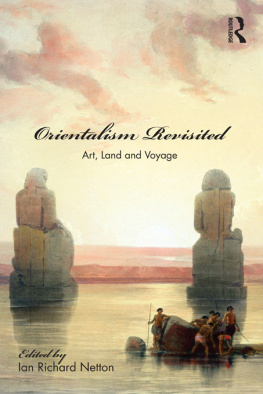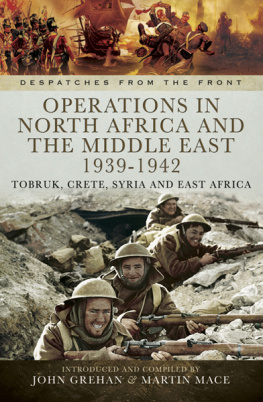Gender and Diversity in the Middle East and North Africa
The images of women in chadors or burqas as contrasted with images of belly dancers which circulate today as representations of Muslim/Middle Eastern women do not fluctuate from the images propagated by Orientalist paintings and colonial photographs which also offer contrasting representations of the veiled thus secluded and the naked or semi-naked thus eroticised Muslim/Oriental woman.
As well as challenging the prevailing stereotypes of Middle Eastern and North African women, the book aims to highlight the element of diversity which characterises the lives of these women and the regions to which they belong. The sense that most of the Middle Eastern and North African countries are Muslim does confer a common identity, a distinction from others that may serve to bridge wide social, cultural, and economic differences among them. However, it is also important to stress that significant elements other than Islam contribute to the making of MENA societies and women's cultural identities.
This book was published as a special issue of the British Journal of Middle Eastern Studies.
Zahia Smail Salhi is Senior Lecturer in Arabic Literature and Gender, at the Department of Arabic and Middle Eastern Studies, University of Leeds. She is an executive member of the Centre for Gender Studies at Leeds, and the Executive Director of the British Society for Middle Eastern Studies (BRISMES).
Gender and Diversity in the
Middle East and North Africa
Edited by Zahia Smail Salhi
First published 2010 by Routledge
2 Park Square, Milton Park, Abingdon, Oxon, OX14 4RN
Simultaneously published in the USA and Canada
by Routledge
270 Madison Avenue, New York, NY 10016
Routledge is an imprint of the Taylor & Francis Group, an informa business
2010 British Society for Middle Eastern Studies
Typeset in Times by Value Chain, India
Printed and bound in Great Britain by TJI Digital, Padstow, Cornwall
All rights reserved. No part of this book may be reprinted or reproduced or utilised in any form or by any electronic, mechanical, or other means, now known or hereafter invented, including photocopying and recording, or in any information storage or retrieval system, without permission in writing from the publishers.
British Library Cataloguing in Publication Data
A catalogue record for this book is available from the British Library
ISBN10: 0-415-54975-2
ISBN13: 978-0-415-54975-2
Contents
Zahia Smail Salhi
Amalia Sa'ar and Taghreed Yahia-Younis
Fatima Sadiqi
Moha Ennaji
Amel Grami
Aye Gunes Ayata and Fatma Ttnc
Naomi Sakr
Nadje Al-Ali
Anila Daulatzai
Lina Khatib
Zahia Smail Salhi
Nadje Al-Ali is a Reader in Gender Studies, SOAS, University of London, UK.
Aye Gunes Ayata is based at the Middle East Technical University, Department of Political Science and Public Administration.
Anila Daulatzai is currently conducting anthropological research with widows in Kabul, Afghanistan. She is completing her PhD in Social Anthropology at the Johns Hopkins University.
Moha Ennaji is Professor of Gender and Linguistics, Rutgers University, USA and Universit Sidi Mohamed Ben Abdellah, Fs, Morocco.
Amel Grami is based at the Department of Arabic Studies, Faculty of Literatures, Arts and Humanities, Manouba, Tunisia.
Lina Khatib is a senior lecturer at the Department of Media Arts at Royal Holloway, University of London, UK.
Amalia Sa'ar is a cultural anthropologist at the University of Haifa.
Fatima Sadiqi is Professor of Linguistics and Gender Studies, University of Fes, Morocco.
Naomi Sakr is based at the Communication and Media Research Institute, University of Westminster, London, UK.
Zahia Smail Salhi is Senior Lecturer in Arabic Literature and Gender, at the Department of Arabic and Middle Eastern Studies, University of Leeds.
Fatma Ttnc is a visiting scholar at Harvard University, Women, Gender and Sexuality. And has also worked at Abant Izzet Baysal University in the Department of Public Administration.
Taghreed Yahia-Younis is a Political Sociologist. She is a post-doctorate fellow at the University of Haifa.
ZAHIA SMAIL SALHI
The theme of Gender and Diversity in the Middle East and North Africa (MENA) is, in my opinion, a very topical theme in view of the often disconcerting stereotypes of the women of this specific region that continue to circulate within both learned and less learned circles, sometimes in the same way as they were generated by the Orientalist media in the last two centuries.
The images of women in chadors or burqas, contrasted with images of belly dancers, that circulate today as representations of Muslim/Middle Eastern women do not fluctuate from the images in Orientalist paintings and colonial photographs, which also offer contrasting representations of the veiled, thus secluded, and the naked or semi-naked, thus eroticized, Muslim/Oriental woman.
The chapters in this volume are written against these stereotypes and in an interventional way in the representations of the women in question. Wherever possible the authors are either native of the country of study or have based their field research on the countries in question, and worked directly with their subject matter, which has ultimately resulted in first-hand experiences being analysed and presented.
As well as challenging the prevailing stereotypes of Middle Eastern and North African women, the chapters in this volume aim to highlight the element of diversity that characterizes the lives of these women and the regions they belong to; it is a known fact that Western audiences are informed by images of Middle Eastern women as a single entity; they are the suppressed, secluded, veiled, and passive victims of a hostile religion. The sense that most Middle Eastern countries are Muslim does confer a common identity, a distinction from others that may serve to bridge wide cultural, social, and economic differences among them.1 However, it is also important to stress that significant elements other than Islam contribute to the making of MENA societies and women's cultural identities.
Tunisian women, for instance, do not essentially suffer from the same dilemmas as those from Iraq, Afghanistan, or Saudi Arabia, nor do they share similar pre-Islamic ethnic origin, language, socio-economic status, colonial experience, modern national identity, and so on.
Likewise, while it is often believed in the West that all MENA women are or should be veiled, that they are all subject to honour killings, female genital mutilation, physical violence, marital rape, social discrimination in the work place, and so forth, it is of paramount importance to stress that these forms of oppression are not experienced in the same manner nor with the same intensity by women across the region. Therefore the notion of Muslim women proves to be more reductive because it diminishes the composite identity of millions of nationally, ethnically, economically, and geographically diverse women to a single element, the religion of Islam. What usually underlies such a one-dimensional identification is an essentialist perception of Islam, which sees Islam as a reified entity that has been the primary, if not the only factor in determining the conditions of women's lives.2





